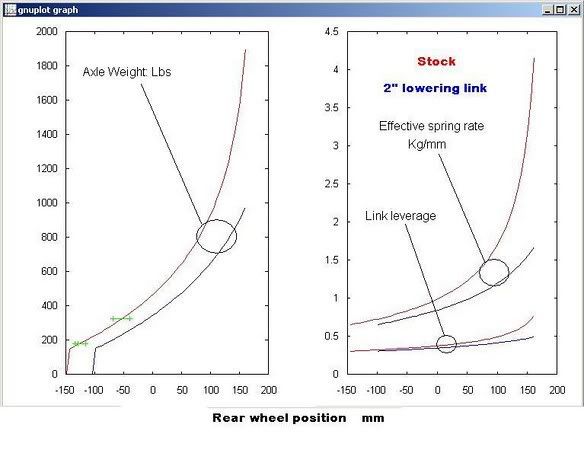
Originally Posted by
NordieBoy

Because the bottom of the shock is a set length from the top. It's only free to move to that point.
Preloading the spring by compressing it say 10mm means it's putting 50kg of force into trying to expand.
=.
See mate, this is where you have got it wrong too.
Assuming the shock is NOT fully extended, then increasing the preload does NOT compress the spring - it just increases the ride height. Get out in the shed with a spanner and a tape measure if you don't believe me.
You have most of the information that you need to understand what I am saying.
You understand that spring load and spring length are proportional to one another.
Assume that the shock is in mid-stroke somewhere so that the rear suspension is free to move. If you don't change the load on the bike then you don't change the load on the spring and so its length must stay the same. So if you move the top of the spring away from the top shock mount (increase the preload (I hate that word) setting), you also move the bottom of the spring away from the top mount by the same distance i.e. the shock extends and the ride height increases.
The spring length stays the same.
In a static situation, the only thing that compresses the spring is adding more weight to the bike.
Preload is all about keeping the ride height correct with varying loads on the bike.
If the shock is fully extended, then a mechanical stop cones into play, in which case, all bets are off.
I may not be as good as I once was, but I'm as good once as I always was.






 Reply With Quote
Reply With Quote


 I think we are talking in circles a bit, but here's why it is correct to call it preload; heck it's not even complex nor counterintuitive.
I think we are talking in circles a bit, but here's why it is correct to call it preload; heck it's not even complex nor counterintuitive. 




 If it did go away, then it would have no effect on the ride... and shocks would not have a pointless adjuster built-in.
If it did go away, then it would have no effect on the ride... and shocks would not have a pointless adjuster built-in.

 All discussion is good, if it leads to greater understanding
All discussion is good, if it leads to greater understanding 


Bookmarks